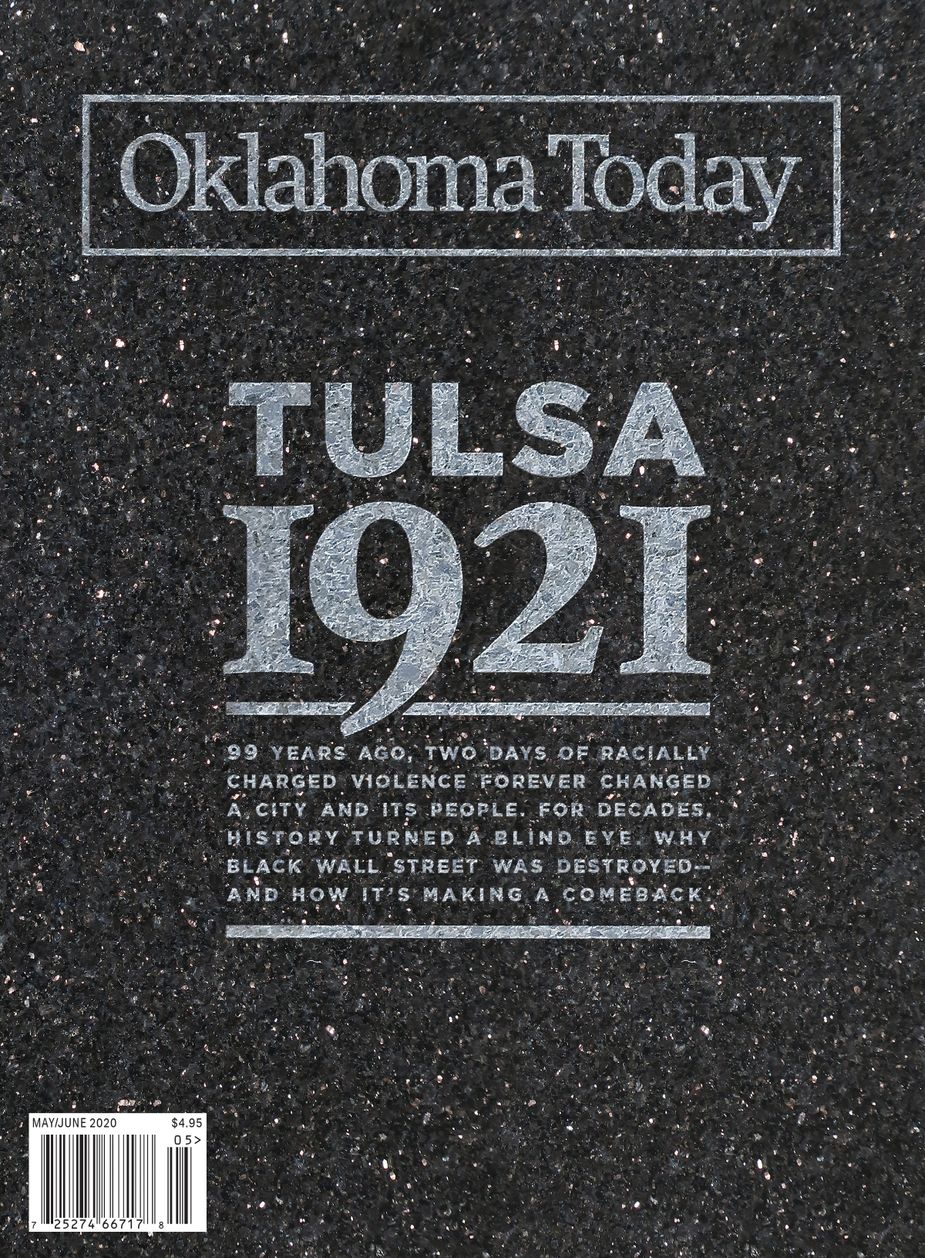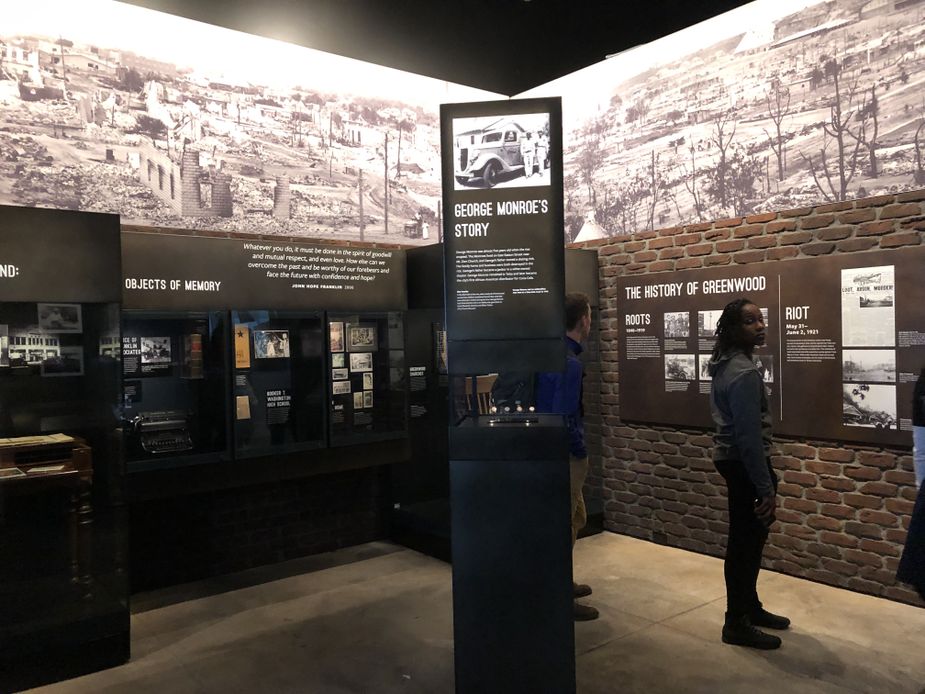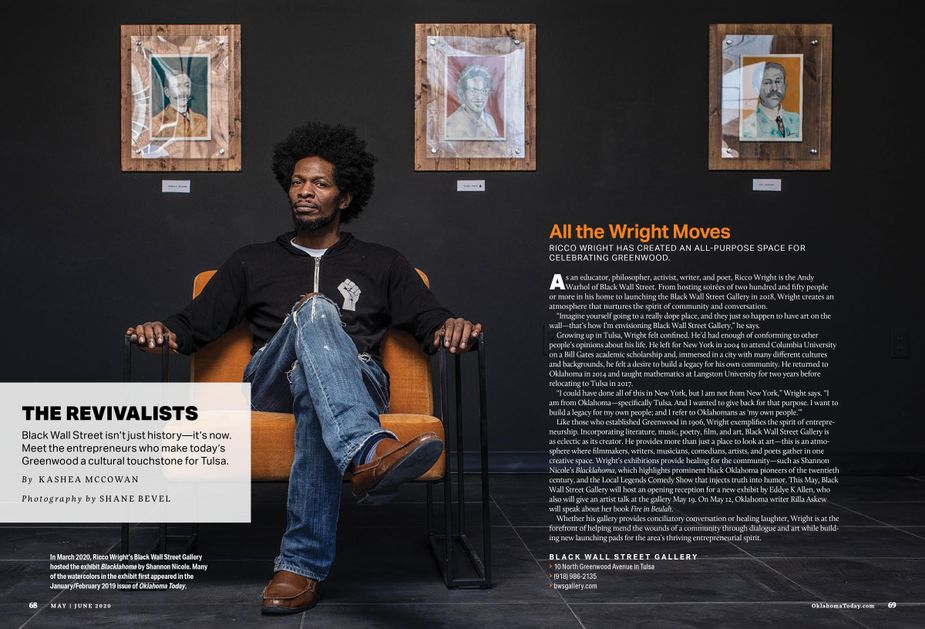We Cannot Hide History
Published April 2020
By Nathan Gunter | 7 min read
The world seems to be made of ifs these days. So here’s a tiny bit of certainty for you: Sometime in the next week or so, Oklahoma Today subscribers will begin receiving their copies of the May/June 2020 issue. Newsstand buyers, you’ll have to wait until the first of the month to get yours, but we hope you will if you are able. This one in particular means a lot to us, because it marks the first time in the magazine’s sixty-four-year history that we’ve dedicated significant space to telling the story of the Tulsa Race Massacre of 1921.

Like almost every other Oklahoman, I was an adult before I learned about the Tulsa Race Massacre. When I was a thirteen-year-old student in Mr. Lile’s eighth-grade Oklahoma History class at Brink Junior High in Moore, it decidedly was not a part of the curriculum. I don’t even recall it appearing in the textbook or the Friday showings of Oklahoma Passage we sat through, though to be fair, I did spend quite a lot of time in that class fending off spitballs from my fellow classmates—and using aforementioned textbook to do it.
I did eventually learn what had taken place in Greenwood in 1921, but it was a little more than a year ago that the reality of it knocked the wind out of me. My husband and I had taken a trip to Washington, D.C., and managed to score early-morning entry to the Smithsonian’s National Museum of African American History and Culture. What we’d planned as a half-day excursion turned into more than six hours wandering through that amazing, expansive building and its many exhibits, including one about Tulsa.

Part of the National Museum of African American History and Culture's exhibit on the Tulsa Race Massacre. Photo by Nathan Gunter.
What I saw changed me. I stood inside this space—not much bigger than the home office in which I’m currently sitting—for more than half an hour vacillating between rage, grief, and brokenness. I listened as videos played of survivors testifying to their experiences in Greenwood in 1921. Tears rolled down my cheeks as I surveyed the images—many from the Tulsa Historical Society and appearing in our upcoming issue—of burned-out buildings including homes and businesses. And my fists balled up in such rage that they left moon-shaped bloody fingernail marks in my palms when I saw the photographs of burned black bodies that, after the massacre, had been printed en masse and sent as postcards by racists bragging to their friends about what they’d done.

The aftermath of the Tulsa Race Massacre in 1921. Photo courtesy Tulsa Historical Society & Museum.
My heart crashed around in my chest like it was at a demolition derby. My rage was incandescent. It still is. What happened in Tulsa in 1921 was a sin against humanity and God. And what has happened since in the name of keeping these events out of the public’s memory is a sin as grave, if not more so. Greenwood matters because history matters. Greenwood matters because facts matter. Greenwood matters because our black brothers and sisters matter. Greenwood matters because our decisions about how to move forward as a group of humans—be it a family, a city, a state, a country, or the entire world—must be based, at least in part, on our collective memory, and when you remove painful events from collective memory, you remove the lessons they have for all of us.
Wiser people than me have worked hard to name those lessons and bring them to as many minds as possible, so from my position of relative privilege and historical remove, I won’t sermonize on them any further. But just as we must know and accept the bad things about the people we love, Oklahomans must know and accept this part of our history. It must become woven into our sense of ourselves just like gorgeous sunsets, country music, high-plains views, the smell of thunderstorms, chicken-fried steak, open-heartedness, and every other good and magical thing about being Okie does.
So I hope you’ll take some of the ample down time we’ve all been given—or burdened with, depending on your view—and give this story a read. Check out the portfolio of poetry and visuals from black Oklahoma writers and artists that accompanies it. Read Research Editor Kashea McCowan’s fantastic feature about some of the current business owners who are making the Greenwood District vibrant and amazing once again (and if you can, order some of their wares online; like all other small businesses, they could use the boost right now).

Kashea McCowan's story appears in the May/June 2020 issue of Oklahoma Today.
Oklahoma is an amazing, complicated, beautiful place, and I love it with every bit of my heart. Learning and telling this story hasn’t changed that, and I don’t believe it will for you either. But my prayer is that it will give us new eyes to see and new ears to hear how we all can care for each other a little better. I hope you’ll let me know what you think about this or anything else in the issue by emailing nathan.gunter@TravelOK.com, and please: Stay safe and healthy, Oklahoma.
"Tuesday Trivia: April 21, 2020"
"What I Learned in Oklahoma: Distantly Social"
You May Like
Weekly Events Calendar: June 30-July 6, 2025
This week in Oklahoma: A huckleberry hub in Jay; free train rides in Oklahoma City; and music legends in El Reno.
This week in Oklahoma: A huckleberry hub in Jay; free train rides in Oklahoma City; and music legends in El Reno.
Oklahoma Today Podcast: June 30, 2025
OKC! OKC! OKC! The Thunder won it all, folks! This week's special episode is presented from the teams NBA Championship Parade from downto...
OKC! OKC! OKC! The Thunder won it all, folks! This week's special episode is presented from the teams NBA Championship Parade from downtown Oklahoma City.
A Pink Paradise
Any book store is a good time, but this one's got a specialty soda bar.
Any book store is a good time, but this one's got a specialty soda bar.










